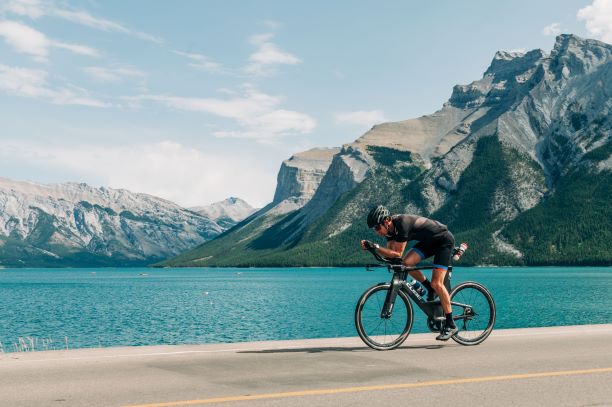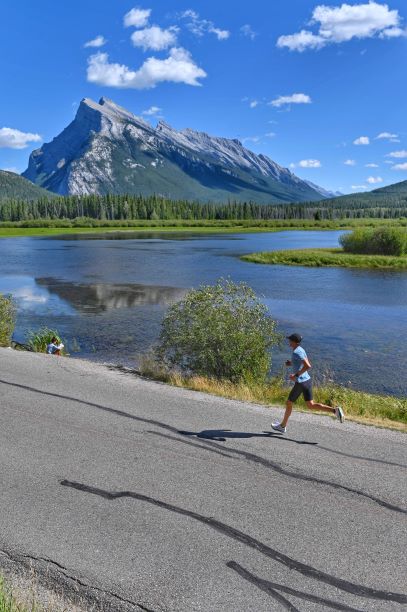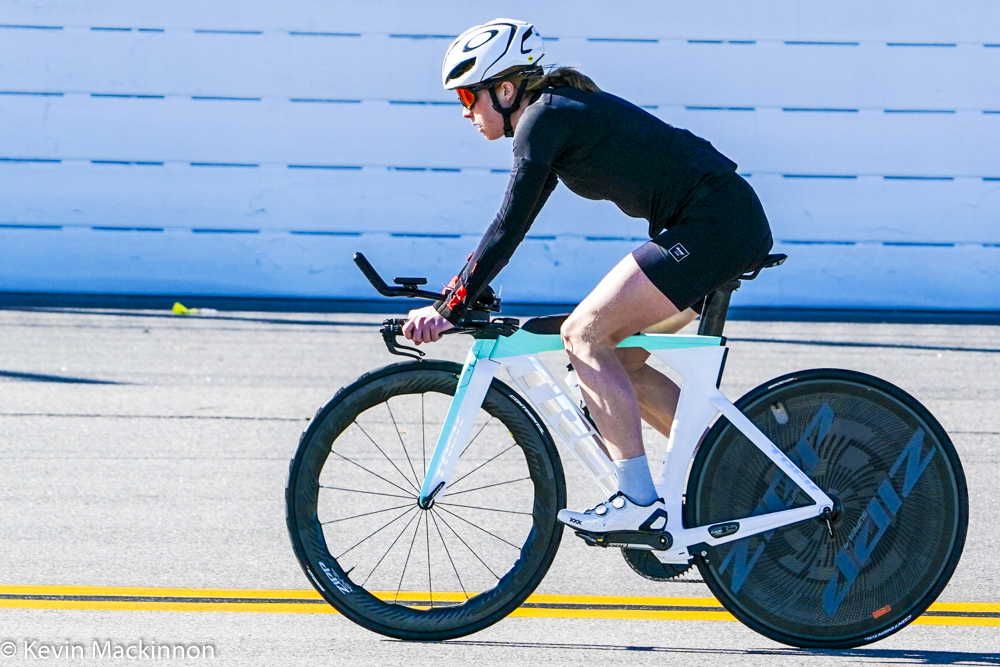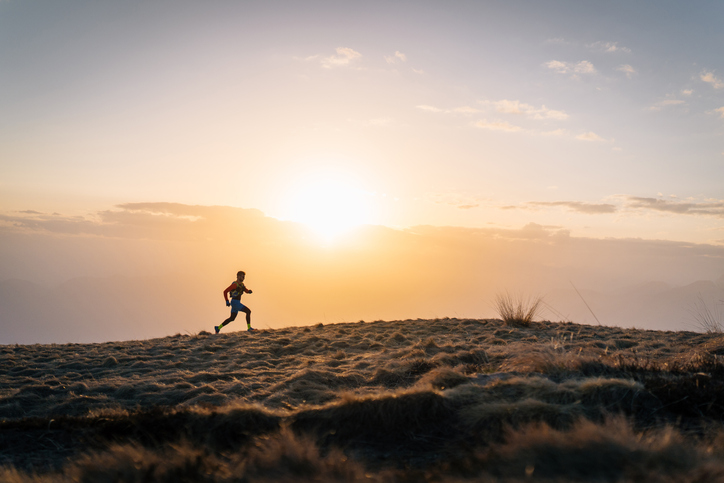Get the most out of your triathlon fitness through long, aerobic training
Long, aerobic run and bike sessions are the bread and butter of triathlon training
 Photo by:
Jackie Larouche
Photo by:
Jackie Larouche
“Nikolaj, you can always run!” The voice of my first triathlon coach, a former Olympian from Ukraine, still echoes in my head when I find an excuse to skip a long run. Although I now go out for long runs in almost any condition, I always enjoy them more when temperatures are warmer and the weather nicer. That’s even truer for long rides. Those are sessions that even my former coach would avoid when the weather was grim. “Nikolaj, you don’t go out on the bike when it rains,” he once told me after I slipped on the tramway on a rainy day.
We all know well how hard it is to complete long sessions during the dark, cold winter months. Of course, apps like Zwift and treadmills can help with keeping endurance training in the schedule, but they don’t replace the feeling of running and cycling outdoors on a nice day (sorry Zwift).
“Easier or longer sessions give the flexibility to run or ride in new, fun places,” says the winner of the Professional Triathletes Organisation’s 2020 Championship, Paula Findlay. “They might not be optimal locations for intervals, but a refreshing change of scenery is important sometimes, so I take advantage of easy sessions to explore a little and refresh the mind for the next hard workouts.”
Findlay says she generally has three to four “aerobic/cruise runs and three longer-aerobic rides per week.” The same goes for her swimming routine, where she has three to four long aerobic sessions per week, which while not easy, are “general aerobic building workouts.”
Another Canadian professional, Jason Pohl, says he typically has two easy runs per week with strides at the end of them (one short and easy, and one moderate). He then has two quality runs: one at the beginning of the week (tempo or strength) and a long one on Sunday (with increasing intensity). Cycling-wise, he has “two easy recovery rides and three specific/quality rides per week,” he says. “The easy rides are super aerobic and easy, usually up to two hours. The specific rides range from three to five hours and, with Saturday being my long ride, which is usually six to eight hours with a mix of easy and specificity.”

No matter your race goal, the long aerobic sessions are the bread and butter of triathlon training. But what exactly counts?
“The simplest explanation I would give for a long-aerobic session would be at a pace where you could talk, but not chatter away and sing,” says David Tilbury-Davis, coach of pros Lionel Sanders and Lesley Smith, among others. “It would be at a pace where you can say 10 to 12 words and pause for breath. Even for elites, it’s a pretty reasonable litmus of aerobic intensity.”
As per length, it would depend on the individual, their level of fitness and race goals. But say you’re training for your first Ironman, and you’re trying to build your aerobic fitness: Tilbury-Davis suggests building up your sessions to three to four hour long rides and to two hour long runs. However, it’s essential to build that length steadily and, only before your primary race, fit in a couple of longer rides of five to six hours and a couple of three-hour runs.
Related: Long run preparation – teaching the body to run with tired muscles
Benefits
“The benefit of the long runs is building resilience,” says Tilbury-Davis. “The reality is that for most individuals, relative to their actual capability of speed, the pace that they run at off the bike is not that quick. And that’s true for age groupers, elites, and professionals.” If he had to choose the most important session for an athlete training for an Ironman, Tilbury-Davis has no doubt: “given logistics, circumstances, location, caveats, a long trail run at an aerobic effort, even if you have to walk up a hill, is by far, hands down, the most important session.”
Long aerobic rides are also opportunities to get used to staying in the saddle for a long time and practice nutrition strategies ahead of the events. And there are psychological benefits from going long, too.
“When it comes to the build-up to the race (more specificity training), there is a psychological component,” says Pohl. “You need to be focused. You need to be mentally strong, And you need to have that positive confident mental chatter. Your mind needs to be challenged at times. For when your mind and body is challenged, new opportunities to break through rise. And when you do break through, that gives you confidence and fulfillment.”

The pace
The suggestion given by Tilbury-Davies, to set up the aerobic pace according to the talk test, is often a useful “old-school” trick to maintain a good pace for aerobic exercise without overdoing it. It has also been researched and proved effective by different studies, including the 2008 The talk test as a marker of exercise training intensity by Carl Foster of the University of Wisconsin and others. The idea was to find a valid surrogate of lab tests to determine exercise intensities. The test has been found to be robustly related to the standard physiological changes that happen inside the body at different workout intensities.
Even Findlay says she usually doesn’t look at pace or watts for these types of sessions, and not only for convenience. “I enjoy just going out without any number parameters. It can take the fun out of training to be glued to your watch or power meter 100 per cent of the time.”
Of course controlling intensities is important as well, particularly through heart rate monitors and power meters. And many athletes prefer to be safe than sorry, and be spot on where they should be to optimize the training adaptations. “Coach Ryan Bolton has me do a lot of work with paces,” says Pohl. “I find by doing work at paces, you are familiar to them when it comes to the race. For zone intensities, 95 per cent of the paces on the bike are based on FTP. For the run, the paces are based on what my tempo speed is. Then in each workout, we will incorporate what zones to be at. By training like this, I become very aware of what zones I am in and what pace I am pushing.”
There are also other goals that elite and professional athletes target with long and aerobic rides, such as optimizing the use of fats as the primary fuel source when exercising at low intensities. There are several ways to do that—including physiological testing and training low on carbohydrates—but most of the time it’s better not to overcomplicate things and keep them simple. The talk test is probably the easiest and most efficient method to get the best out of your long sessions.

Variations
Whether you decide to monitor your workout intensity or not, you can always spice it up with some pace variations. That doesn’t compromise the main aerobic goal of the session and adds some more fun too.
“Particularly at the end of a long run, the last twenty minutes, you can try to run a little bit quicker than their Ironman goal pace or marathon pace,” says Tilbury-Davies. “That builds a bit of fatigue resistance, and forces you to hold your form together even when you’re tired.”
There are other benefits to an intermittent change of pace, too. Recent studies have shown that even short accelerations or sprints can activate aerobic stimuli and keep the fast-twitch muscle fibers trained. That doesn’t mean you have to perform all-out sprints every time you go out on a long run or ride. Still, even just six to eight seconds acceleration here and there (every 30 minutes of a three to four hour ride, or every 10 to 15 mins of a long run) can have positive physiological and psychological effects.
Related: Going long – five keys to moving up from Olympic to half-distance racing

When in season
If you live in an area where winter is harsh, going for a long ride every week may not be possible. And that’s when indoor options can become beneficial alternatives and when interval training over the winter can be used too. However, it is important to keep the aerobic engine as fit as possible in every season.
“I think these sessions are really important at all times of the year,” says Findlay. “They allow some flexibility to go slower if you’re feeling tired and allow you to build or maintain some general aerobic fitness year round. Doing every session with intervals or sets would be exhausting and stressful.”
She also says that she uses unstructured, aerobic runs and rides without any intervals to build back from the time off at the beginning of a new season. Only after that do athletes add short hill repeats on the run, long bike rides, and eventually tempo or race pace work as races get closer, to their training.
Pohl, who spends most of the winter in Boulder, with some trips to Arizona, says that he manages to do 80 to 90 per cent of his training outdoors. Only if he spends a lot of time in Calgary does he move his winter riding to Zwift.
“In the winter months, I do lots of volume and base work,” he says. “The key focus is to build that aerobic capacity and strength. I still incorporate strides, hill work, short sprints to keep the neuromuscular system in check and strong. When race season approaches, you can easily shift gears into more specificity and higher-end work, and having the ability to handle it because of the strong base you created during the winter months.”
Meanwhile, other coaches and athletes would adopt what is called an ‘inverted periodization’: one that focuses on intervals and higher intensities early in the season and on aerobic sets when the season gets better, or shortly before main events.
No matter the approach, and even if my former coach would have said that “you can always run,” he would have also agreed that it’s better to run and ride outside when the weather is nicer.
Nick Busca is a freelance journalist and triathlete based in Great Britain.
